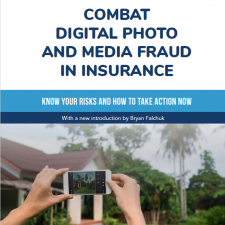Recapping from the introduction of this 3-Part Series, Attestiv was recognized in the Plug-N-Play article “Top 10 Insurtech Companies in 2020” as an Insurtech “making promising changes in the industry.” The Attestiv technology is an Insurtech solution with “faster and cheaper claims processing, underwriting, and inspections.” Attestiv calls it the Trilemma –three ubiquitous industry challenges.
- Carrier – Reducing claims fraud
- Agency – Increasing Customer Self-Service speed
- Adjuster – Improving claims workflow simplicity
In our conversations up and down the insurance continuum, it seems that the key to solving the Trilemma is applying new technologies so that media assets are captured, transmitted, and stored using tamper-proof methods.
Of course, for compliance reasons, these carrier stories are hypotheticals so as not to violate confidentiality.
As stated in the introduction, and which is widely known in the industry, insurance carriers currently report a 10% claims fraud rate, costing the industry over $40 billion. Two of the most common points of insurance fraud are underwriting and claims. Even when fraud is not in play, inaccuracies and resulting compensation over-payments result in profit leaks.
How does the Attestiv technology help? Let’s tackle claims fraud first, underwriting fraud second. In the P&C claims area, in its simplest form, claims payments are made based on estimates to repair or replace damaged assets covered by the policy – cars, homes, household items, commercial property, etc.- following accidents, natural disasters, storms, criminal behavior, and so on. The issue becomes a matter of scope and scale, plus trust and verification.
From a scope and scale standpoint, what is the damage or loss? How can the insurance company, which is often physically removed from the source of the claim, accurately assess the scope of the insurable loss? This becomes especially nuanced during times of massive amounts of claims all at once. (Fortunately, during these days of Covid-19, on the P&C side, we are seeing the opposite – a dearth of claims due to the unprecedented economic shutdown. Our thoughts are with our friends in the Health and Life industries.)
Photos and videos are the answer, combined with additional corroborating documentation, e.g. property valuations, asset replacement costs, etc. Tampering and fraud associated with insured assets has always been an issue. In recent years, with advancing digital imaging tools, insurance fraud has become an even bigger challenge, especially when combined with competitive pressures to do more with less within the claims processing department. It’s just plain hard to keep up with the volume of claims and the acceleration of deep-fake technology.
Enter the Attestiv solution, where photos and videos can be captured, secured, and certified as authentic – or not. With a patented Attestiv digital media workflow as part of the claims process, claims examiners can immediately be notified of the authenticity – or lack there-of – of a piece of media.
On the underwriting side, similar principles and concepts apply. Insuring assets, either with fake media or no media at all, only to then later see claimant activity, is a most common source of insurance fraud. Enter smartphones. Embedding a smartphone photo app within the Application, Quoting, and Binding workflows solves multiple challenges at once – workflow efficiency, quoting accuracy, and fraud control and prevention on the backend.
Putting a simple tool in the hands of the insured, or the Agent, one that uses common, everyday technologies to capture media, is the answer. Using Artificial Intelligence to supplement the hand-held devices to improve accuracy and reduce human error, while securing that media using blockchain technology, is a smart application of technology to a persistent industry problem.
What’s the ROI? Imagine if we could just have a 1% gain on $40b in insurance fraud. That’s a $400 million gain, not to mention the savings from workflow optimization and the improved customer experience and resulting satisfaction. Nothing sells more insurance than a satisfied customer telling their friends about a claim that was paid, using modern technology, on time, accurately, and efficiently. The claim is the “moment of truth” for an insurance company. Forget saving 15% on the premium in 15 minutes or less. Pay my claim the next day. Now THAT’S something I’ll tell my friends and family about.
Yes, there is a better way. Since 2017, we’ve been working hard to solve the Trilemma, combining blockchain, artificial intelligence, and API’s. And it’s working.
Meanwhile, we’re always interested in new ideas from the field. We’re just a phone call or email away. All boats rise with the tide. So, thanks for sharing.






